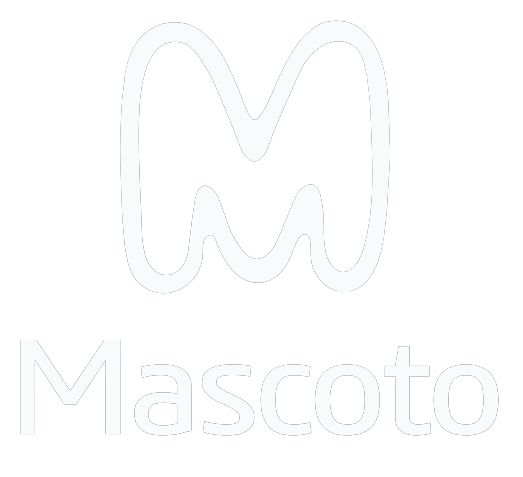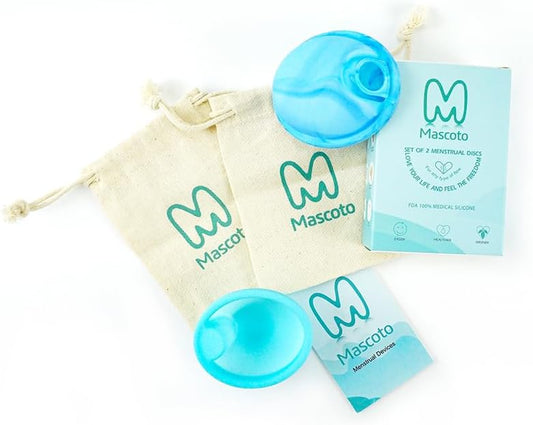Loriana Soma, MD, is an obstetrician/gynaecologist at The Ohio State University Wexner Medical Center, in her article "Can menstrual cups help you get pregnant?" she said:
"It’s possible using a menstrual cup can help, but there’s no evidence that it does. Theoretically, it could help because it would keep the sperm close to the cervix. The sperm are in place to make the trip through the cervix, into the uterus and eventually to the egg in the fallopian tube for fertilisation. Sperm can live in the uterus for several days."
However, some couples eager to try natural aids are willing to experiment with new conception methods trending online.
Repurposing menstrual cups as conception devices by using them to hold semen close to the cervix after intercourse. The goal is to provide a direct path for more sperm to reach the egg. While primarily designed for menstruation, a few women attribute getting pregnant faster to using menstrual cups for conception assistance. Proponents of this off-label fertility hack believe it can boost chances, especially for couples struggling with infertility.
And although, as we mentioned above, doctors remain pretty sceptical, citing a lack of evidence that they reliably improve pregnancy rates, some people have gotten pregnant using the cups, and it has worked for them.
In this post, we have compiled examples of real-life experiences using conception cups sourced from various public online forums.
Table of Content:
What Science Says
In 2022, YahooLive conducted its own investigation of this matter. In the introduction of the article, the author, Korin Miller, provides the link to the forum of a famous Babycare website where women share their stories of successful pregnancies using menstrual cups.
The online edition also interviewed a number of doctors, asking them the question - Can a menstrual cup help you get pregnant? Amongst the questioned experts were Dr Christine Greves, an ob-gyn at the Winnie Palmer Hospital for Women and Babies, Dr. Iris Insogna of Columbia University Fertility Center, and women's health expert Dr. Jennifer Wider. Asked doctors said that, in theory, storing sperm closer to the cervix could increase the chances of pregnancy. The menstrual cup acts as a blockade, encouraging sperm to move towards the cervix and uterus, increasing the chances of fertilisation with a newly ovulated egg. However, there is no evidence to support this claim. The use of a menstrual cup for conception is a matter of debate due to the lack of scientific research on its effectiveness.
However, this does not mean that it is impossible. Earlier in the 80s of the last century, studies were conducted using a cervical cup. According to them,
“61 couples with infertility from 1-11 years duration were instructed in the use of the cervical cup for artificial insemination using homologous semen in the privacy of their own homes. There have been 36 reported pregnancies in 32 of these couples. Among women with primary infertility, the pregnancy rate was 43%; it was 67% for those with secondary infertility and 53% overall. Sperm counts and per cent motility, as well as postcoital test results, however, failed to indicate the eventual ability to conceive. Regardless, among couples with documented infertility, this method provided over 1/2 of the couples with at least 1 pregnancy.”
(Source: https://pubmed.ncbi.nlm.nih.gov/6832404/).
Also, this study stated that
“... the technique is simple, inexpensive, without significant risk or discomfort, and can be carried out by the couple at their convenience and in privacy.”
Real-Life Experiences
Unfortunately, in addition to the lack of scientific evidence and researches, not so many real-life stories confirming the benefits of menstrual cups for conception.
In one of the success stories published in the Daily Mail, they tell the story of Jodie from London, who was told by her doctor that she would never be able to conceive naturally. But after using the fertility cup for one cycle, Jodie found she was pregnant. Even though she had been declared infertile, she explains her successful conception as being down to trying the conception cup. However, the tone of the article looks suspiciously promotional. So we can't fully trust it.
In an article on the famous parenting forum Parents.com, you can find other successful stories of women who became pregnant: Julia Dennison, from Sunnyside, New York; Karly McBride, from Springfield, Virginia; and Meggan Hunt, from Sparta, New Jersey. Read more here.
We should understand that while personal experiences are valuable in their own right when it comes to possible evidence of efficacy, they're not always enough to signal that anyone who uses a particular intervention will definitely see the same results — there are just too many potentially confounding factors.
Therefore, if you are having trouble conceiving, you should talk to your doctor first and consider seeing a fertility specialist. They can evaluate several factors that might be contributing to someone's difficulty in conceiving and can identify the most effective ways to help.
If you are trying to conceive, it is important to understand your menstrual cycle and ovulation. Tracking your menstrual cycle, monitoring your basal body temperature, and using ovulation predictor kits can help you identify your most fertile days and maximize your chances of conceiving.
What is the Difference Between the Menstrual and a Conception Cup?
A menstrual cup and a conception cup serve different purposes in the context of women's health and reproductive processes.
A menstrual cup is designed for use during menstruation to collect menstrual fluid. The menstrual cup is inserted into the vagina, where it forms a seal to collect menstrual blood.
Meanwhile, a conception cup is designed to aid in the process of conception by assisting with the placement of sperm near the cervix. The conception cup is placed over the cervix to hold sperm close to the opening of the uterus. This proximity increases the chances of sperm reaching the egg for fertilization. Conception cups are typically used after sexual intercourse and are intended to be left in place for a specific period to optimize the chances of fertilization. In essence, using conception cups is the alternative to the insemination procedure, but at home, not in a hospital.
In summary, while both cups are used in the vaginal area, they serve different purposes for which they were developed.
What Else Do People Who Have Used Conception Cups Say About Their Experience?
Here's a summary of common experiences people report from using conception cups:
- Many noticed the cups were easy to insert and comfortable to wear internally for the recommended time. The soft silicone material and rounded shape prevented irritation.
- Some found removal tricky until they got the hang of breaking the seal gently without spilling contents. Using the loop helps.
- Users liked being able to directly deposit sperm into the vagina rather than relying on imprecise at-home insemination methods.
- Those who didn't conceive felt the cups helped them feel they were actively trying a new option, giving them hope.
- Some women who did get pregnant after using cups attributed success to consistent use for 2-3 cycles. But success rates vary widely.
- Most users say proper cleaning is essential for avoiding odour or irritation when reusing the cups across cycles.
- Opinions differ on whether cups increase intimacy by focusing both partners on conception or detract from spontaneity.
Overall, conception cup users say the experience provides a sense of control and optimism. But effectiveness appears highly individual, as with any conception aid. Consulting a doctor before use is recommended.
How Does the Process of Using Conception Cups Impact Couples?
Using conception cups can impact couples in a few key ways:
Intimacy - The cups require precise timing and handling of sperm, which can feel less spontaneous. However, some couples find going through the process together increases intimacy. Open communication is key.
Scheduling - Maximizing the cups' effectiveness takes coordination to track ovulation and properly time insertion/removal. This planning can disrupt normal routines.
Roles - Women bear the physical effects of wearing the cup. Some may feel pressure to conceive. Men may feel less involved. Checking in often to share feelings is important.
Mindset - Having to use conception aids can be emotionally difficult for couples ready for pregnancy. But cups offer hope and a sense of control.
Stress - Any fertility struggles add frustration and stress. Conception cups could exacerbate tension if they do not meet expectations. Partners should manage expectations realistically.
Finances - According to the NHS webpage, the cost of an insemination procedure is between 700-1600 pounds for each cycle. Meanwhile, the cost of a conception cup is just £24.99.
Overall, couples report that conception cups impact intimacy, scheduling, gender roles, emotions, stress levels, and finances. Working together with openness, empathy, and patience helps navigate the process successfully.
Are There Any Challenges Shared by Users?
Here are some common challenges that conception cup users report:
- Some report messiness like leakage if cups become dislodged or aren't sized properly. Wearing a panty liner can help.
- Others had difficulty conception after 3-4 cycles of using cups and felt discouraged the method didn't work.
- Proper positioning was tricky for some women based on their unique anatomy. Patience and practice help.
- Remembering to insert cups after intercourse and properly time removal was challenging for some couples.
So, users saw varying levels of success with conception cups. Having realistic expectations and following usage guidance appears to improve outcomes.
Tips for Using Conception Cups Effectively for Maximizing Your Chances of Success
Here are some tips for using conception cups effectively to maximise your chances of conception success:
Track ovulation using OPKs, BBT, and cervical mucus to identify your 2-3 most fertile days for conception cup use. Timing is crucial.
Ensure the cup size matches your anatomy. Proper fit seals sperm in.
Practice inserting and removing the cup a few cycles prior to getting comfortable with the process. Use water or lubricant to help insertion.
Have intercourse first before inserting a cup to increase natural cervical mucus production, which helps sperm.
Keep cups in 1 hour after sex. Set a timer if needed. This gives sperm time to reach an egg. Don't remove it early.
When removing the cup, break the seal gently. Don't pull too abruptly.
Thoroughly wash cups with mild soap and water after each use. Proper cleaning prevents infection or irritation.
Following the steps carefully each cycle, tracking fertility signs diligently, and using the cup consistently over 3-6 months can really optimise your chances. Be patient through some potential trial and error as you learn your body's response.
Conclusion: Are Conception Cups the Right Choice for You?
Determining if conception cups are the right choice depends on a few personal factors:
- Fertility history - Cups may provide greater benefit if you have known cervical or uterine issues, a tilted uterus, or diagnosed conditions like endometriosis impacting conception.
- Duration trying to conceive - Cups are reasonable to try after 6 months of unsuccessfully trying, or sooner if fertility testing indicates the need.
- Age - Women over 35 may want to try cups sooner since fertility declines with age. Cups can compensate for egg quality changes.
- Cost - At 25-30 pounds, cups are affordable compared to IVF.
- Comfort level - As an internal device, cups must feel comfortable. You'll need to be open to using a menstrual-cup-like product internally.
- Partner support - This method requires partner cooperation. Both parties must feel comfortable with the process.
- Patience and consistency - To be effective, cups need 3-6 months of proper use. You must be willing to use them consistently and correctly through multiple cycles.
- Supplemental use - Cups can complement other strategies like tracking, supplements, positions, etc. Combining methods may be beneficial.
Discuss trying conception cups with your doctor to decide if they are suitable for your unique situation and needs. Be open-minded through a trial period to see if they work for you.




